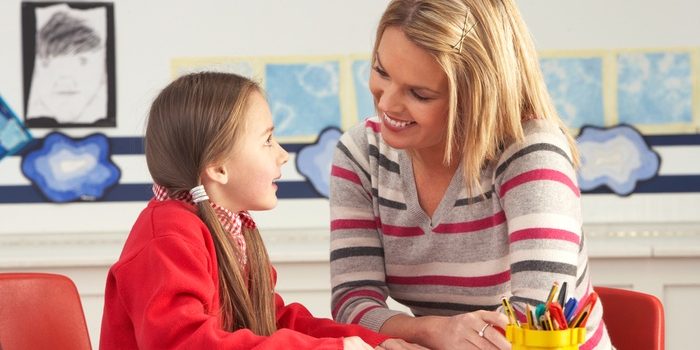by Brisbane Learning Difficulties Tutor Justin Clark
Helping Dyslexic Children to Read
One of the most apparent symptoms for students with dyslexia is the avoidance of reading. This is because, for these students, reading is frustrating because of their inability to decode words and make meaning from what is being read. Therefore, the reading process itself is not enjoyable and who wants to sit with uncomfortable feelings?
A word of caution here is that sometimes what can appear to be dyslexia may instead be a deficiency over years of not being taught adequate decoding methods. Dyslexia is characterised by difficulties with accurate and automatic word recognition, along with poor spelling and decoding abilities. This problem leads to profound interferences with overall reading and writing fluency that pervade all areas of academic achievement and is one of the key elements to keep in mind when teaching students with dyslexia and finding out how to help a child with dyslexia to read.
Reading Difficulties of Dyslexic Children
Another comment element with dyslexia is that because of the amount of effort and attention that is expended on word recognition means that less time is being devoted towards comprehension. Less comprehension means that the story does not make as much sense and therefore is not as enjoyable or engaging. Reading then can become a chore and the student may simply give up. If students with dyslexia are to develop automatic word recognition when reading texts, a great deal of practice has to take place in context using both supported oral, as well as silent reading. This is a key component when teaching students with dyslexia.
Sometimes students with dyslexia may find themselves faced with increasing amounts of decoding instruction in isolation. Instead, the focus should be on increasing opportunities for guided practice in context. Unfortunately, by having this as their primary form of practice, teachers can actually minimise the chances of struggling readers becoming more proficient rather than increase the likelihood that they will become skilled readers.
How to Help a Child with Dyslexia to Read
Prosody is a key element of reading fluency and consists of intonation, tone and rhythm. They form what is called expressive reading. As readers, we have to apply our knowledge of oral exchanges to develop the correct sense of the interaction. The accurate use of these elements allows readers to determine shades and depth of meaning that might not immediately be apparent in written text. For example, when taking turns in reading by taking on different roles of the characters in the text, we can create different voices for the characters and so alter our tone and intonation/pitch. This can also make reading more enjoyable and more engaging. Therefore, an interactive relationship exists in which prosody both contributes to and is reflective of a reader’s comprehension.
Also, by developing an awareness of the importance of appropriate expression and phrasing when helping students, it is possible to prevent them from developing the belief that fluent reading is simply fast reading. Thus when looking for how to help a child with dyslexia to read, the emphasis needs to be on reading for meaning along with reading for enjoyment.
Fluency Instruction for Helping Children with Dyslexia
When looking for how to help a child with dyslexia to read, one way to provide students with the instruction they need is by integrating four fluency-oriented principles into oral reading instruction. These principles are modelling, opportunities for practice such as silent reading, appropriate support and assistance and the demonstration of appropriate phrasing. While these elements are the basis of a range of fluency strategies that are effective for all learners, the integration of these principles into instruction for students with dyslexia is critical to their development as skilled readers.
Not only is such modelling likely to instil a love of reading in students, but it also provides them with a sense of what smooth, expressive oral reading should sound like.
While reading to students is a common practice in the primary grades, it tends to be a fairly rare occurrence in later year levels. However, there are many texts, from poems to highly descriptive expository selections, such as speeches, that are ideal for older students. Therefore, it is essential that they regularly read in situations where some support is available.
Finally, by making selections from a range of genres, it increases the likelihood that students will find a text that is engaging. Comics along with graphic novels, (comic strips in a novel format), such as the ‘Dog Man’ series, for example, are useful as students can use pictures and visual cues of faces and body language as a means of deciphering more difficult words. Comedic elements can also aid in fostering reading engagement. These type of texts also expose readers to a range of figurative language techniques and may provide a doorway into reading for those who use reading avoidance.
Therefore, using these reading methods in a reading program is crucial if you are looking for how to help a child with dyslexia to read. Further difficulties can arise when a mismatch of instruction occurs. By knowing the appropriate reading strategies for individual students, multiple connections can be formed that lead to more automatic word recognition, fluent reading and aid in reading comprehension. Integrating the four fluency-orientated principles of modelling, opportunities for practice, the provision of support and assistance and phrasing into reading instruction for students with dyslexia is critical for their development into becoming skilled readers.
This article is provided by Justin Clark from Hope Tutoring, an experienced dyslexia tutor in Brisbane. Contact us today if you are looking for a Tutor in Brisbane or someone who can do remote tutoring.

Justin Clark Brisbane Learning Difficulties Tutor


